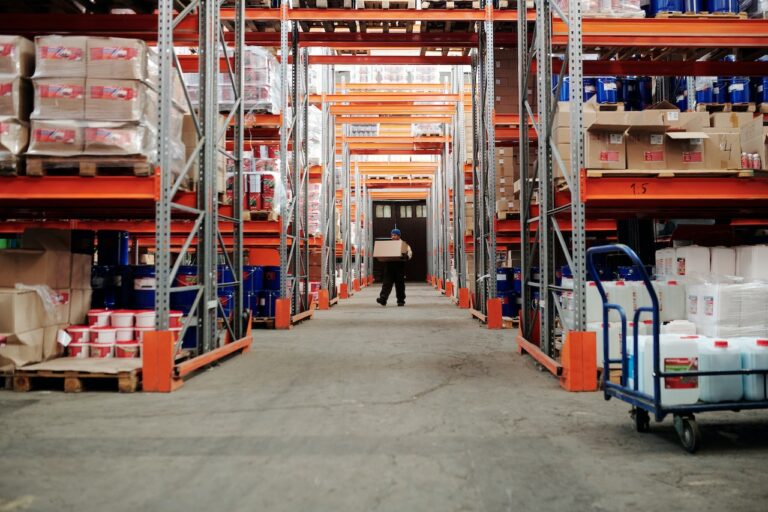Moving can be a daunting task, especially when it comes to packing delicate items like hanging clothes. These are not just pieces of fabric; they represent memories, occasions, and, sometimes, significant investments. Ensuring they reach your new destination without wrinkles or damage is crucial.
But how do you pack hanging clothes effectively for a move? Whether you’re relocating across the street or across the country, the way you pack can make all the difference. At “Friends Moving,” we’ve been assisting families and businesses with their moving needs for over 15 years.
Drawing from our extensive experience, we’ve crafted this comprehensive guide to help you pack your hanging clothes efficiently. Dive in to get expert insights and make your moving experience smoother.
Why Special Attention is Needed for Hanging Clothes?
Moving homes is a complex task, and among the myriad of items to be packed, hanging clothes often stand out. These aren’t just daily wear; they often include cherished outfits, expensive suits, delicate dresses, and more.
Ensuring they remain in pristine condition during the move is paramount. But why do hanging clothes demand such special attention?
- Memories and Moments: Hanging clothes often represent special occasions, from weddings to graduations, holding sentimental value.
- Investment and Quality: Many hanging garments, like designer outfits or tailored suits, are significant financial investments and showcase superior craftsmanship.
- Delicate Fabrics: Materials such as silk, linen, or wool are prone to wrinkles moisture damage, and require special care during a move.
- Risk of Wrinkling: Improper packing can lead to deep-set wrinkles that are challenging to remove.
- Potential for Stains: The moving process can expose clothes to spills from other items, leading to stubborn stains.
- Physical and Moisture Damage: Clothes are susceptible to tears from sharp objects, and damp packing conditions can cause mold or mildew.
- Odor and Color Transfer: Packed improperly, clothes can absorb unwanted smells or experience color bleeding from darker garments.
Materials You’ll Need for Packing Hanging Clothes
When it comes to moving, especially for items as valuable as hanging clothes, having the right packing materials is crucial.
These materials not only ensure that your clothes remain in pristine condition but also make the packing and unpacking process smoother. But what exactly do you need, and why are these materials so essential?
- Wardrobe Boxes: Large, tall boxes with a metal bar across the top, perfect for hanging clothes directly from your closet. Keeps clothes wrinkle-free and allows for easy transfer between closets.
- Packing Paper: Soft, ink-free paper that’s ideal for wrapping individual items or filling empty spaces in boxes. Prevents stains, offers additional protection, and keeps clothes fresh.
- Plastic Wraps: Clear, stretchy plastic material used to wrap around clothes or entire wardrobe boxes. Shields clothes from moisture, dust, and potential spills.
- Packing Tape: Strong adhesive tape to seal boxes securely.Ensures boxes remain closed during transit, protecting contents from external elements.
- Labels and Markers: Tools for clearly marking boxes with their contents and destination rooms. Streamlines the unpacking process and ensures items are easily located.
- Bubble Wrap: Air-filled plastic material for wrapping delicate or embellished clothing items. Provides cushioning against physical shocks or bumps.
- Local Moving Stores: These specialized stores offer a range of quality packing materials tailored for moving. Ensures you’re using industry-standard materials designed specifically for safe and efficient moving.
Read More: Storage Solutions for Your Move in Vero Beach
Step-by-Step Guide to Packing Hanging Clothes
Packing hanging clothes for a move is more than just folding them and placing them in boxes. It requires a systematic approach to ensure they remain in top-notch condition during transit.
Whether you’re moving across town or to a different state, these steps will guide you in packing your hanging clothes efficiently and effectively.
1. Preparing Your Clothes: Cleaning and Sorting
- Cleaning: Before packing, ensure all your hanging clothes are clean. This means washing or dry-cleaning them as necessary. Clean clothes are less likely to develop mold or mildew during storage or transit.
- Sorting: Organize your clothes by category. Group together suits, dresses, shirts, and so on. This not only makes packing easier but also simplifies the unpacking process at your new home.
2. Using Wardrobe Boxes: A Detailed Guide
- Selecting the Right Size: Wardrobe boxes come in various sizes. Choose one that best fits the length of your clothes to prevent them from touching the bottom and wrinkling.
- Packing: Hang clothes directly from your closet into the wardrobe box, ensuring they aren’t packed too tightly to avoid creasing. Fill the bottom space with light items like shoes or handbags.
- Sealing: Once packed, close the box and seal it securely with packing tape.
3. Alternative Methods if Wardrobe Boxes Aren’t Available
- Garbage Bags: Slide a garbage bag over a group of hangers, making a hole in the bag’s bottom for the hanger hooks. Tie the bag’s bottom to protect the clothes.
- Suitcases: Lay clothes flat in suitcases, layering them with packing paper or bubble wrap for added protection.
- Regular Boxes: Fold clothes neatly and place them in regular moving boxes, using packing paper to prevent wrinkles.
4. Tips for Packing Accessories like Belts and scarves
- Belts: Roll belts and place them in small boxes or pouches. Alternatively, they can be laid flat at the bottom of wardrobe boxes.
- Scarves: Fold scarves neatly and place them in boxes or suitcases. For delicate scarves, consider wrapping them in packing paper or placing them in individual plastic bags.
- Other Accessories: Items like ties, hats, and other small accessories can be packed in separate boxes, ensuring they are labeled correctly for easy identification during unpacking.
5. Labelling and Organizing
- Clear Labels: Clearly label each box with its contents and the room it belongs to. This will make the unpacking process more straightforward and efficient.
- Special Care Items: For clothes that require special care or are particularly valuable, consider adding a “Fragile” or “Handle with Care” note on the box.
6. Protecting Clothes During Transit
- Positioning in the Moving Truck: Ensure wardrobe boxes are placed in a stable position in the moving truck, where they won’t topple over. Avoid placing heavy items on top of boxes containing clothes.
- Weather Protection: If you’re moving during rainy or snowy conditions, ensure the moving truck is watertight. Consider wrapping wardrobe boxes in plastic wrap for an added layer of protection.
7. Unpacking and Setting Up at Your New Home
- Immediate Unpacking: Once you arrive at your new home, prioritize unpacking your hanging clothes to prevent wrinkles from setting in.
- Setting Up: Before hanging your clothes in your new closet, ensure it’s clean and free from dust. If you’ve used garbage bags or plastic wraps, remove them promptly to allow your clothes to breathe.
Packing Specialty Hanging Clothes
Specialty hanging clothes, such as evening gowns, suits, heavy coats, and jackets, often require extra care and attention during packing. These items are not only valuable in terms of cost but also hold sentimental value for many.
- Evening Gowns: Use garment bags to protect the delicate fabric and embellishments. If a garment bag isn’t available, wrap the gown in white packing paper or a white cotton sheet to prevent any color transfer.
- Suits: Place suits in individual garment bags to maintain their shape and prevent wrinkles. For added protection, consider using a suit carrier, which offers a structured packing solution.
- Heavy Coats and Jackets: Opt for larger wardrobe boxes, ensuring that the coat or jacket doesn’t touch the bottom. Fill the sleeves and body with acid-free tissue paper to help maintain the coat’s shape.
- Delicate Embellishments: For clothes with beads, sequins, or other embellishments, place a layer of tissue paper between folds to prevent the embellishments from imprinting on the fabric.
- Leather and Suede Items: Avoid plastic wraps as they can cause the material to sweat. Instead, use breathable garment bags. Store in a cool, dry place during transit to prevent any potential damage.
- Fur Coats: Like leather, fur needs to breathe. Use a cloth garment bag and ensure the fur isn’t crushed during the move.
- Shoes and Matching Accessories: If your specialty clothing has matching shoes or accessories, pack them in the same box but in separate bags or compartments. This ensures that you have everything together when you unpack.
Labeling and Organizing Boxes
In the midst of a move, the importance of labeling and organizing boxes cannot be overstated. Proper labeling ensures that your belongings reach their intended destination and makes the unpacking process significantly smoother.
When each box is clearly marked, it reduces the chances of misplaced items and streamlines the entire moving experience.
- Clarity is Key: Use a bold, black marker to write legibly and clearly on each box.
- Content Listing: Briefly list the main items inside the box to make identification easier.
- Room-Specific Labels: Mark each box with the room it belongs to, such as “Bedroom” or “Kitchen.”
- Fragile Items: Clearly label boxes containing delicate items with “FRAGILE” to ensure careful handling.
- Box Numbering: Numbering each box (e.g., 1 of 10, 2 of 10) can help keep track of all your belongings.
- Open First Labels: For boxes containing essentials that you’ll need immediately upon arrival, label them as “Open First.”
- Directional Arrows: Indicate which side of the box should face up, especially for boxes containing items that need to remain upright.
Read More: Choosing the Right Moving Vehicle in Vero Beach
Loading and Transporting Hanging Clothes
When it comes to the actual move, the manner in which your hanging clothes are loaded and transported plays a pivotal role in ensuring their safety. Wardrobe boxes, specifically designed for hanging clothes, are a boon, but they need to be handled with care.
Positioning wardrobe boxes in the moving truck is crucial. These boxes should be placed in a stable position, ideally against the sides of the truck, to prevent them from toppling over during transit. It’s advisable to place them away from heavy items that might shift and cause damage. If possible, secure the boxes using straps or ropes to keep them stationary.
Ensuring the safety of your clothes during transit goes beyond just the positioning of boxes. The environment inside the truck matters, too. Ensure that there’s no moisture inside, as this can damage your clothes. If you’re moving during inclement weather, double-check that the truck doesn’t have any leaks. Lastly, avoid overloading the truck.
Unpacking Tips for Hanging Clothes
The journey of your hanging clothes doesn’t end once they reach your new home. The unpacking process is just as crucial as packing to ensure your clothes remain in pristine condition.
Setting up your new closet and ensuring your clothes are free from wrinkles or damage is essential for a smooth transition into your new space.
- Immediate Attention: Begin by unpacking wardrobe boxes first to prevent clothes from getting creased due to prolonged confinement.
- Inspect for Damage: Before hanging, quickly inspect each garment to ensure there’s no damage or staining that occurred during transit.
- Sequential Unpacking: Unpack clothes in the order you wish them to be arranged in your closet, such as by type, color, or season.
- Use Quality Hangers: Ensure you use sturdy hangers that support the shape of your garments, especially for heavy items.
- Aerate Clothes: If clothes are packed in plastic, remove them and let them breathe for a few hours before placing them in the closet.
- Steam or Iron: For items that have developed minor wrinkles during the move, consider using a steamer or iron to freshen them up.
- Organize Accessories: As you set up, allocate specific spaces for accessories like belts, ties, and scarves to ensure easy access.
Benefits of Hiring Professionals like “Friends Moving” to Pack Hanging Clothes for Moving
When it comes to moving, especially something as delicate as hanging clothes, the expertise and experience of professionals can make all the difference. Here’s why hiring professionals like them is a wise decision:
1. Tailored Solutions
Every individual has a unique collection of garments, each with its own set of requirements. Whether it’s a cherished evening gown passed down through generations or a heavy-duty winter coat designed for extreme conditions, “Friends Moving” recognizes these nuances.
Their team takes the time to assess each item and determine the best packing method. This meticulous approach ensures that every piece, regardless of its material or design, is given the care it deserves.
2. High-Quality Packing Materials
Generic packing materials might not offer the protection that specialty garments require. “Friends Moving” invests in top-of-the-line packing materials, such as sturdy wardrobe boxes that prevent clothes from wrinkling and breathable garment bags that protect against moisture and dust. This commitment to quality ensures that your clothes remain in pristine condition throughout the move.
3. Efficiency and Speed
While packing might seem straightforward, packing efficiently and safely is an art. The team at “Friends Moving” has honed this skill over numerous moves.
Their expertise allows them to pack your wardrobe swiftly, ensuring that you’re not left scrambling at the last minute, all while maintaining the highest standards of safety for your garments.
4. Expertise in Handling Delicate Items
Delicate fabrics, intricate embellishments, and vintage garments can be particularly challenging to pack. The professionals at “Friends Moving” undergo specialized training to handle such items.
They understand the vulnerabilities of different materials and have techniques in place to ensure that even the most delicate items remain undamaged.
5. Comprehensive Services
Moving is more than just packing. It involves logistics, transportation, and often storage. “Friends Moving” offers an all-in-one solution, ensuring that every aspect of your move is handled with professionalism. Whether you need temporary storage solutions or assistance with setting up your new home, they’ve got you covered.
6. Cost-Effective
There’s a common misconception that professional moving services are prohibitively expensive. However, when you factor in the potential costs of damaged garments due to improper packing, hiring experts like “Friends Moving” becomes a cost-effective solution. Their competitive rates, combined with their impeccable service, offer unparalleled value for money.
7. Peace of Mind
Beyond the tangible benefits, there’s an intangible yet invaluable advantage to hiring professionals: peace of mind. Knowing that your cherished garments are being handled by experts, who will ensure they reach your new home in the same condition they left the old one allows you to focus on other aspects of the move.
Conclusion
Packing hanging clothes for a move is not just about transferring garments from one place to another. It’s about preserving memories, safeguarding investments, and ensuring that cherished items remain in impeccable condition.
As we’ve explored, the intricacies of packing hanging clothes demand attention to detail, the right materials, and specialized techniques. While it’s possible to undertake this task independently, the expertise of professionals like “Friends Moving” can make a world of difference.
Their tailored solutions, high-quality materials, and comprehensive services ensure that every garment is treated with the care it deserves. If you’re planning a move soon, we strongly encourage you to reach out to “Friends Moving” for assistance. Why take a chance with your cherished garments? Contact “Friends Moving” today for a quote, and let them make your next move smooth, efficient, and stress-free.
FAQs
Yes, wardrobe boxes are designed to keep hanging clothes wrinkle-free during transit. They come with a metal bar, mimicking a mini closet, ensuring clothes remain in their original shape.
It’s recommended to reach out at least two weeks in advance to ensure availability and adequate preparation. However, “Friends Moving” can accommodate last-minute requests based on their schedule.
Absolutely! “Friends Moving” offers comprehensive services, including unpacking. Their team can assist in setting up your new closet, ensuring a seamless transition.
“Friends Moving” provides solutions for all types of garments. While hanging clothes can be placed in wardrobe boxes, regular clothes will be packed using other appropriate packing materials, ensuring all your clothing items are well-protected.
“Friends Moving” is equipped to handle a wide range of garments, from daily wear to specialty items. If you have specific concerns or unique items, it’s best to discuss them directly with the team to ensure proper care.





